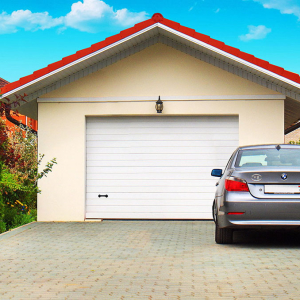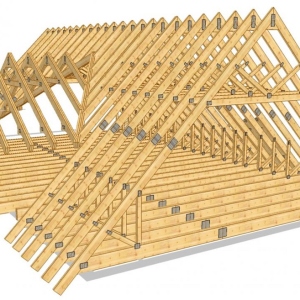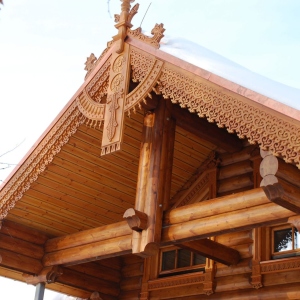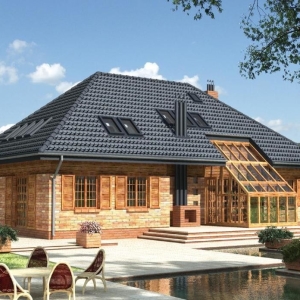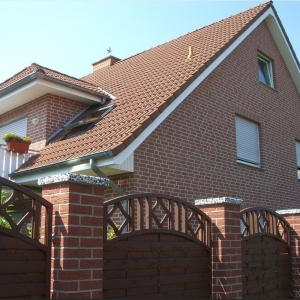Reed roof is known since ancient times, when there were no modern roofing coatings. However, with their appearance about the pen forgotten. And today, preference is preferred by traditional materials - Schifer, proflist, tile, although reed is the most environmentally friendly material, and the roof of the root is distinguished by a truly unique and original design.
Features of Kamysh
To begin with, it is worth understanding what the unique properties of the Kamysh are concluded:
- The material is resistant to the summer heat, is not afraid of a strong frost, does not lose its properties after heavy rain, does not respond to the impulses of the wind.
- The roof from the root is not terrible moisture and the development of fungus, because for this plant dampness is a natural habitat.
- Since numerous stems in the coating are easy to fit, and it itself has a hollow structure, then natural ventilation coverage is ensured.
- Due to the flexibility of the stems, there is the possibility of creating complex architectural forms of roofs.
- Camping with the help of a reservoir, a duplex roof, there is no need for hydro and thermal insulation, because this material is characterized by low thermal conductivity and is not inclined to the creation of condensate.
- The tubular structure of the stem is the perfect protection of the house from noise, whether it is rain sounds, hail blows or whistle wind.
- Under such a roof should not be afraid of lightning, because it is not inclined to accumulate statistical electricity.
- The reed is a durable material: the service life of the roof service exceeds 60 years without additional care activities, such as insulation, cleaning and tinted. The only thing - in a couple of years, it will take the root to be corrected, since the reeds by virtue of its naturalness has a breathtaking property.
- In case of damage to the coating and the need to repair, work does not take a lot of time and strength, because they are reduced only to the manufacture of patchwork.
- Reed roof is an exquisite solution, naturally complementing the landscape of the surrounding area.
Currently, the real estate is most often used to cover the roof of the arbors, baths, household buildings, less often - residential buildings, as developers belong to this building material with distrust, in particular these concerns concern the risk of easy ignition.
Using a roof roof
Before mounting a reed roof, it is recommended to pay attention to the subtleties of use when creating the roof:
- The roof slope must exceed 35 degrees.
- Load per 1 meter square should be no more than 50 kilograms.
- The constructive value of the breakfast should not be more than 20 degrees.
- Choosing a roof of a complex configuration for construction, work with reed is complicated accordingly.
- If you build a roof above the gazebo, the base can be an open design, and in the case of a residential building it should be closed.
- There is no possibility to equip a wastewater system with a reed roof, so you have to create a drainage layer on the perimeter of the roof, as well as storm sewers on the site so that water goes into it and does not spoil the breakfast, and its splashes are the facade.
- If there is a fireplace or oven in the house, it is necessary to provide protection for such a roof from sparks.
- It is possible to cover the roof with reeds only when the construction is located on an open area, otherwise the shadow formed by the crowns of high trees will contribute to the accumulation of moisture in the coating.
Preparatory work
At the preparatory stage, we will deal with the preparation of the roof material. To create a wicker roof, stems of such annual plants, like reed or rogoz, are used. The second is somewhat different from the first structure, but in general their characteristics and properties are identical. Manually harvest in the autumn-winter time, making sure that the plant rushes. For laying, we take freshly ready-made bright reed, the length of the stems of which is 1.6-2 meters. Before working, all the material is divided into 3 groups: rough, long and short. The creation of the main part is stems having an average and greater length. Skating, corners and along fronts, as well as on small areas, to which carports, gazebos, mansard windows are counted, it is advisable to use short rods. Rough stems that have a curved form are used for the manufacture of the inner layer of roof and act as a substrate. For the arrangement of each base meter, about 8 beams are applied. When creating the first plated roof layer, choose the stems whose diameter is the smallest.

Installation of reed roof
Consider a detailed procedure for building roofs from a roof:
- Under the realm should be equipped with a fragment from a bar, the size of which is 50x50 or 40x60, withstanding a step in 30 centimeters.
- Screw to the base metal screws and secure in the middle of the curved wire, which is made of stainless material. It will hold the sheep roots. In addition, the wire can be replaced by a pen's rope, which performs an additional element of the roof decor.
- Rights of the reed roof should be located on the wall at a certain distance, which makes it up 0.5 m. Starting to work below, spread the beams formed from the stems along the crate, and stretch the wire through them. As a result, the coating will be fixed with wire and rods. Putting the first row, work from the stairs, then move on the crate.
- Mounting work is a mustache for the installation of a canthaw to overlap not aesthetic fastening with wire, observing the uniformity and density of the material laying. Each row should additionally strengthen the hooks by fixing them in the previous layer and moving up when promoting.
- To eliminate the formation of furrow, which subsequently with precipitation will be filling with flowing water, increase the indent when driving to the skate. From above, there should be a small edge, which will later be shot down.
- The ski beam of the reel protects the entire roof from precipitation and creates a steep slope required for the last layer. So that he performs high quality, wet the material and wait until it dry and acquire the shape of the skate. Then the stems located here are covered with copper.
- After styling, the reasons should be aligned by the rows using a special blade, drive the material is denser in bundles and seams. In the presence of the protruding ends of the stems need to be cut.
- At the final stage, the coating is processed inside and outside the antipiren in order to protect against fire. Such a coating is not flushed during precipitation.
Since the reed is a plant, which is of interest to birds, who are happy to have their nests in it, make sure that the stems are laid tight.

The reed roof will become a real highlight of your home, creating a coolness in the house in hot summer days, and in winter it is glad to warm.













